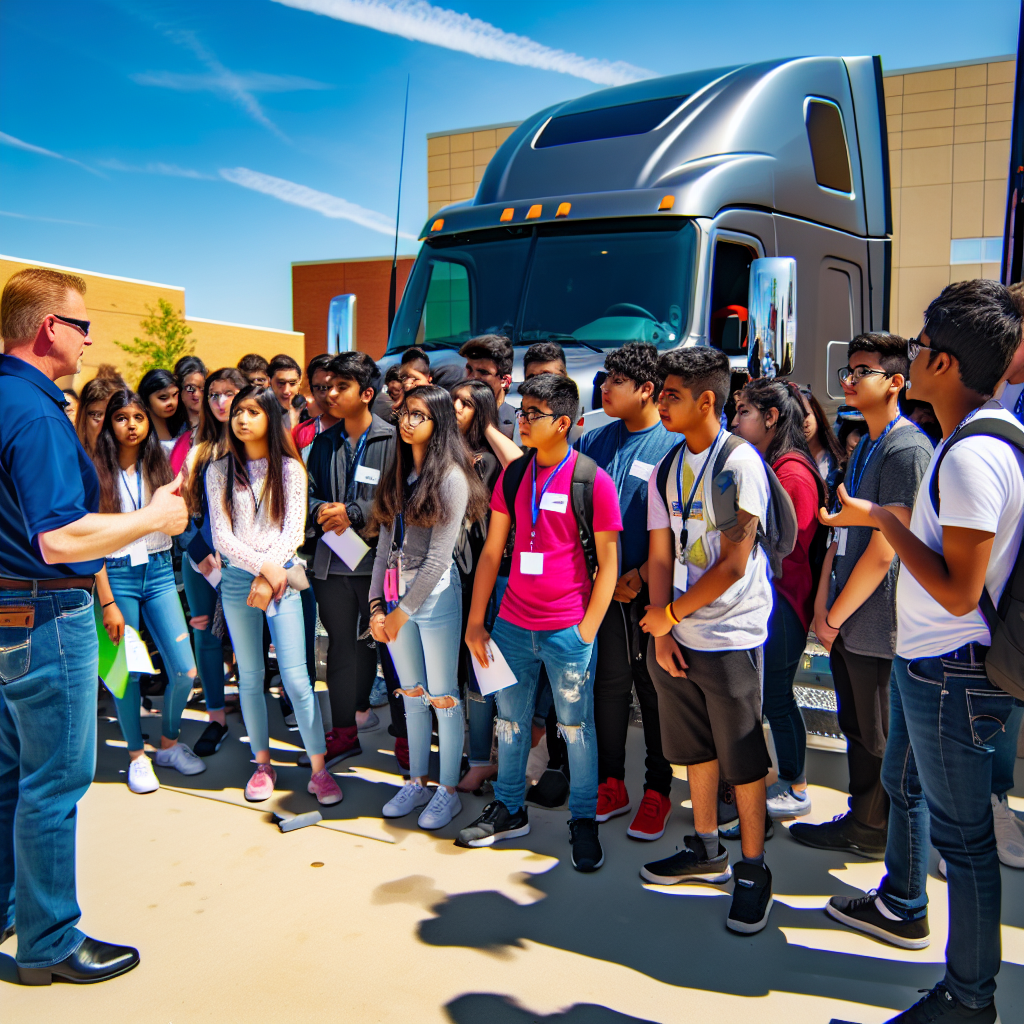In recent years, the trucking industry has faced significant challenges, from a shortage of qualified drivers to an aging workforce that threatens the future of freight transportation. Engaging youth in the trucking sector has become essential to bridging this skills gap, ensuring that the industry remains robust and capable of meeting growing demands. Programs like ‘Take Our Kids to Work’ play a pivotal role in shaping the future workforce, providing young people with hands-on experiences and insights into career opportunities within this vital industry. By introducing students to the myriad of roles available, we can inspire the next generation to consider trucking not just as a job, but as a fulfilling career path, securing the industry’s future for years to come.
In a rapidly evolving world, the trucking industry finds itself at a crossroads, facing critical workforce challenges and an urgent need for new talent. With an aging workforce and a shortage of qualified drivers, attracting the next generation has become more crucial than ever. Initiatives like ‘Take Our Kids to Work’ serve as vital programs aimed at inspiring and informing young people about the diverse career opportunities available in trucking. By opening the doors to workplaces and providing hands-on experiences, this initiative introduces students to the realities of the industry, encouraging them to envision a fulfilling career in this essential sector. As we navigate the complexities of workforce sustainability, engaging youth through ‘Take Our Kids to Work’ is not just beneficial; it is imperative for the future of trucking.
Insights from the ‘Take Our Kids to Work’ Initiative
The ‘Take Our Kids to Work’ initiative is a dynamic program that seeks to bridge the gap between young people and the trucking profession. In its impressive 31-year history, this initiative has fostered widespread participation across Canada, allowing thousands of students to engage with the industry first-hand on a designated day each year. On November 5, students get the unique opportunity to visit workplaces, gain insights into various career paths, and learn about the essential roles that maintain the trucking supply chain.
The primary goal of the initiative is to educate youth about the diverse career options available in trucking, from driving to logistics, operations, and beyond. By providing young people with a tangible glimpse into the trucking industry, the initiative aims to inspire interest and excitement about potential career paths. This exposure not only demystifies the profession but also highlights the crucial role that trucking plays in the economy.
From the industry’s perspective, engaging with youth serves as an essential strategy in addressing current workforce shortages. It creates pathways for talented individuals to explore and consider a future in trucking, ultimately benefiting both the young participants and the industries that require a fresh influx of skilled workers. The positive outcomes are evident; students leave with increased knowledge and respect for the profession, while industries gain enthusiastic potential employees who are beginning to understand the significant opportunities available within trucking.
Engaging youth through programs like ‘Take Our Kids to Work’ is not just beneficial; it is necessary for the sustained growth and success of the trucking industry. By fostering an early interest in the sector, we lay the foundation for a thriving future workforce, capable of navigating the evolving demands of the industry.
Insights from the ‘Take Our Kids to Work’ Initiative
The ‘Take Our Kids to Work’ initiative is a dynamic program that seeks to bridge the gap between young people and the trucking profession. In its impressive 31-year history, this initiative has fostered widespread participation across Canada, allowing thousands of students to engage with the industry firsthand on a designated day each year. On November 5, students get the unique opportunity to visit workplaces, gain insights into various career paths, and learn about the essential roles that maintain the trucking supply chain.
The primary goal of the initiative is to educate youth about the diverse career options available in trucking, from driving to logistics, operations, and beyond. By providing young people with a tangible glimpse into the trucking industry, the initiative aims to inspire interest and excitement about potential career paths. This exposure not only demystifies the profession but also highlights the crucial role that trucking plays in the economy.
From the industry’s perspective, engaging with youth serves as an essential strategy in addressing current workforce shortages. It creates pathways for talented individuals to explore and consider a future in trucking, ultimately benefiting both the young participants and the industries that require a fresh influx of skilled workers. The positive outcomes are evident; students leave with increased knowledge and respect for the profession, while industries gain enthusiastic potential employees who are beginning to understand the significant opportunities available within trucking.
Engaging youth through programs like ‘Take Our Kids to Work’ is not just beneficial; it is necessary for the sustained growth and success of the trucking industry. By fostering an early interest in the sector, we lay the foundation for a thriving future workforce capable of navigating the evolving demands of the industry.
Importance of the ‘Take Our Kids to Work’ Program
“Take Our Kids to Work is a unique opportunity to introduce young people to the many job and career options in our essential sector.”
— Angela Splinter, CEO, THRC
This statement encapsulates the essence of the initiative, emphasizing its role in opening doors for the youth and guiding them towards promising careers within the trucking industry. By participating in this program, students not only gain insights into various roles but also experience firsthand the vibrant community and economic impact of trucking.
Importance of the ‘Take Our Kids to Work’ Program
The “Take Our Kids to Work” program plays a pivotal role in the trucking industry by introducing young individuals to the diverse career opportunities within the sector. This initiative is particularly crucial given the industry’s ongoing challenges in attracting younger talent.
Importance of the Program in the Trucking Industry
The trucking industry faces a significant demographic challenge, with an aging workforce and a shortage of younger drivers. The average age of a Canadian truck driver is 47.1 years, four years older than the average Canadian worker, and less than 15% of drivers are between 25–34 years old. Projections indicate a driver gap of 34,000 by 2024. By participating in the “Take Our Kids to Work” program, trucking companies can showcase the profession to younger generations, potentially reversing this trend. Source
Quotes from Industry Leaders
Angela Splinter, CEO of Trucking HR Canada, emphasizes the program’s value:
“National Take Our Kids to Work Day provides a great opportunity for employers to connect with their employees’ children while showcasing their workplace. At a time when we need to be doing a better job at highlighting our positives, we encourage employers to participate.” Source
David Bradley, acting CEO of Trucking HR Canada, also highlights the initiative’s significance:
“This program offers trucking employers a unique opportunity to showcase their workplace and get up-and-coming workers excited about careers in trucking.” Source
Statistics Supporting Youth Engagement in Trucking Careers
- Millennials are now the largest cohort in the Canadian workforce, yet are still largely under-represented in the trucking industry. A recent study prepared for the Canadian Trucking Alliance predicts a driver gap of 34,000 by 2024, and the ratio of younger to older workers continues to increase. The average age of a Canadian truck driver is 47.1 years, four years older than the average Canadian worker, and less than 15% of drivers are between 25–34 years old. Source
- In the U.S., the average truck driver is now 47 years old, with retirements accelerating and younger workers entering the industry at lower rates. Women represent just 4.1% of truck drivers, despite making up nearly half (47.1%) of the overall labor force in the U.S. Source
By engaging youth through programs like “Take Our Kids to Work,” the trucking industry can address these demographic challenges, fostering a new generation of professionals to sustain and grow the sector.
Evidence-Based Benefits of Youth Engagement in Career Programs
Programs like ‘Take Our Kids to Work’ provide significant advantages for young people and the industries they enter. Here are three evidence-based benefits:
- Improved Employment Rates: Engaging youth in career programs correlates with higher employment rates. Studies have indicated that participants in structured job programs may see an increase in their average quarterly earnings by up to 53% in the year following involvement compared to non-participants. By familiarizing students with various career paths early on, we can enhance their readiness for the job market.
- Skill Development: Early exposure to career options fosters essential work skills like responsibility, organization, and time management. This exposure not only helps youth develop good work habits but also improves their chances of securing stable employment soon after completing their education. Evidence suggests that students who engage in work during high school are more likely to continue working after graduation, exhibiting lower dropout rates.
- Addressing Workforce Gaps: The trucking industry is currently facing a significant workforce gap, with the average age of drivers rising and fewer young individuals entering the field. Engaging youth through programs like ‘Take Our Kids to Work’ is critical to attracting a new generation of drivers. In 2023, an alarming 47% of truck drivers were over the age of 45, highlighting the pressing need for younger workforce entrants. As the industry evolves, these programs can provide pathways for students to consider trucking careers, ensuring the sector’s future sustainability.
By investing in youth engagement and providing early career exposure, we can ensure that young people are not only ready to enter the trucking workforce but also equipped with the skills and knowledge necessary for long-term success.
Evidence-Based Benefits of Youth Engagement in Career Programs
Programs like ‘Take Our Kids to Work’ provide significant advantages for young people and the industries they enter. Here are three evidence-based benefits:
- Increased Employment Rates: Participation in vocational training programs has been shown to significantly boost employment among youth. A study in Nepal found that such interventions led to a 10 percentage point increase in non-farm employment for participants, with program compliant individuals experiencing up to a 31 percentage point increase. This highlights the immediate effects of engaging youth in well-structured career programs by enhancing their readiness for the job market.
- Enhanced Skill Development: Youth employment and training programs equip young individuals with industry-specific skills, which improves their employability. These programs often include technical and vocational training aligned with current job market demands, covering sectors such as technology, healthcare, and trades. This active engagement helps in developing critical work skills like responsibility, organization, and time management, making students more likely to secure stable employment post-education.
- Addressing Workforce Gaps: Employers with formal programs to recruit and hire opportunity youth are significantly less likely to report hiring challenges. Research shows that only 55% of employers with such programs face staffing shortages, compared to 71% of those without. This indicates that engaging youth through programs like ‘Take Our Kids to Work’ is critical to attracting a new generation of workers, thereby addressing significant workforce gaps in various sectors, including the trucking industry.
By investing in youth engagement and providing early career exposure, we can ensure that young people are ready to enter the workforce equipped with the skills and knowledge necessary for long-term success.

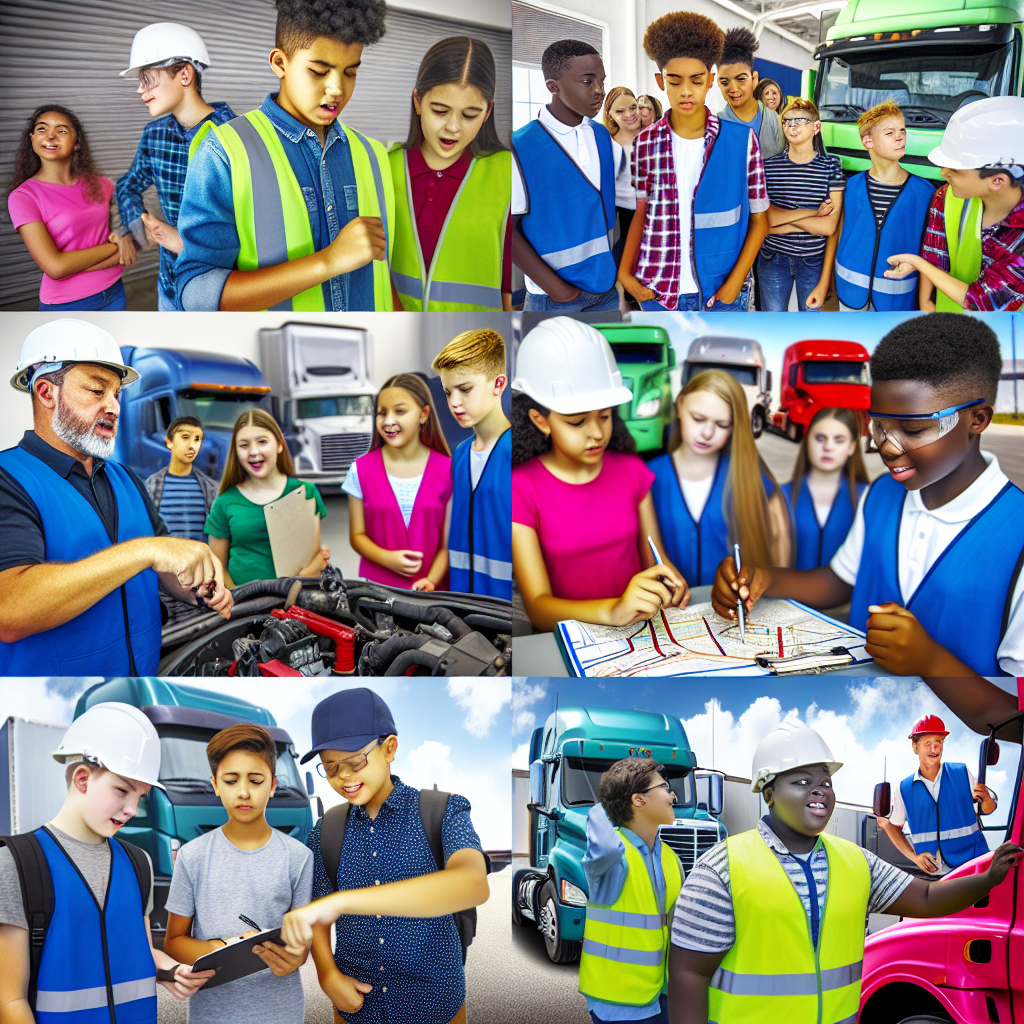
Trucking HR Canada’s Role in Supporting the ‘Take Our Kids to Work’ Initiative
Trucking HR Canada is a vital partner in the ‘Take Our Kids to Work’ initiative, offering important resources and support to participating companies. Their commitment to encouraging youth engagement in the trucking industry includes a variety of materials that help organizations create safe and enjoyable experiences for students.
Trucking HR Canada provides comprehensive guidelines for companies, assisting them in planning and carrying out their workplace activities. These resources include best practice manuals and safety checklists, ensuring that organizations can create an informative environment for students. By equipping companies with tools for engaging activities, Trucking HR Canada helps showcase the diverse career options available in trucking.
Additionally, the organization promotes the idea of mentorship, encouraging industry professionals to interact meaningfully with students during their visits. Such interactions can demystify the trucking profession and inspire young people about possible careers in this field. Trucking HR Canada’s efforts contribute to making workplace experiences educational and enjoyable, fostering valuable connections between students and industry professionals.
In summary, Trucking HR Canada plays a crucial role in supporting the ‘Take Our Kids to Work’ initiative by providing essential resources to companies. Their efforts help create safe and engaging workplaces, motivating the next generation to consider careers in trucking.
| Benefits | Trucking Industry | Other Industries |
|---|---|---|
| Hands-on Experience | Youth engage directly with trucking operations and logistics | Varies by industry; may include internships or job shadowing |
| Specialized Training | Focused on skills like driving and logistics management | Often broader training applicable to multiple roles |
| Addressing Workforce Shortages | Direct efforts to attract a younger workforce | Often competing for similar talent without industry focus |
| Economic Impact Awareness | Understanding of trucking’s role in the economy | May not emphasize industry’s specific contributions |
| Community Connection | Develops local interest and investment in trucking | Depending on industry, may not have the same local ties |
| Career Path Awareness | Clear pathways from youth programs to trucking careers | Career paths often unclear or not directly linked |
| Networking Opportunities | Industry professionals engage directly with youth | Networking can be more abstract without direct involvement |
| Benefits | Trucking Industry | Other Industries |
|---|---|---|
| Hands-on Experience | Youth engage directly with trucking operations and logistics | Varies by industry; may include internships or job shadowing |
| Specialized Training | Focused on skills like driving and logistics management | Often broader training applicable to multiple roles |
| Addressing Workforce Shortages | Direct efforts to attract a younger workforce | Often competing for similar talent without industry focus |
| Economic Impact Awareness | Understanding of trucking’s role in the economy | May not emphasize industry’s specific contributions |
| Community Connection | Develops local interest and investment in trucking | Depending on industry, may not have the same local ties |
| Career Path Awareness | Clear pathways from youth programs to trucking careers | Career paths often unclear or not directly linked |
| Networking Opportunities | Industry professionals engage directly with youth | Networking can be more abstract without direct involvement |
Conclusion
In conclusion, initiatives like ‘Take Our Kids to Work’ serve as a powerful tool for promoting youth engagement within the trucking industry. By connecting students with real-world experiences, these programs not only highlight the diverse career opportunities available but also inspire young individuals to envision a future in trucking. As we face ongoing challenges such as workforce shortages and an aging population, it becomes increasingly vital for industry stakeholders to support and participate in such initiatives.
Engaging our youth today ensures the sustainability of the trucking sector for tomorrow. It is essential for companies, organizations, and community leaders to recognize their role in fostering this crucial engagement. By actively participating in programs like ‘Take Our Kids to Work’, stakeholders can contribute to a brighter future for both the industry and the workforce. Let’s encourage more companies to open their doors to young people, helping them explore the endless possibilities waiting for them in trucking, and work collectively to secure the industry’s promising future.
Let’s make a commitment to support youth engagement initiatives, ensuring that the next generation not only understands but also values the critical roles that trucking plays in our economy and daily lives. Together, we can pave the way for a robust and skilled workforce that is ready to tackle the challenges of the future.
Conclusion
In conclusion, initiatives like ‘Take Our Kids to Work’ serve as a powerful tool for promoting youth engagement within the trucking industry. By connecting students with real-world experiences, these programs not only highlight the diverse career opportunities available but also inspire young individuals to envision a future in trucking. As we face ongoing challenges such as workforce shortages and an aging population, it becomes increasingly vital for industry stakeholders to support and participate in such initiatives.
Engaging our youth today ensures the sustainability of the trucking sector for tomorrow. It is essential for companies, organizations, and community leaders to recognize their role in fostering this crucial engagement. By actively participating in programs like ‘Take Our Kids to Work’, stakeholders can contribute to a brighter future for both the industry and the workforce. Let’s encourage more companies to open their doors to young people, helping them explore the endless possibilities waiting for them in trucking, and work collectively to secure the industry’s promising future.
Let’s make a commitment to support youth engagement initiatives, ensuring that the next generation not only understands but also values the critical roles that trucking plays in our economy and daily lives. Together, we can pave the way for a robust and skilled workforce that is ready to tackle the challenges of the future.
Tips for Successfully Implementing the ‘Take Our Kids to Work’ Program
Companies looking to host a successful ‘Take Our Kids to Work’ program should consider the following actionable tips:
- Plan Ahead: Start planning the event well in advance. Create a timeline that outlines all necessary preparations, from inviting students to arranging logistics for their day at your workplace.
- Engage Staff as Mentors: Encourage employees to participate as mentors. Their engagement is vital in offering students personalized insights into various career paths within the trucking industry.
- Create Fun & Educational Activities: Design activities that are both informative and enjoyable. Consider hands-on experiences, such as:
- Vehicle tours demonstrating safe operations
- Simulations of logistical planning and dispatching
- Interactive presentations about different trucking roles
- Safety First: Prioritize safety throughout the program. Ensure all activities adhere to safety regulations and provide appropriate protective gear where needed. Also, conduct safety briefings for both students and staff before the activities commence.
- Diverse Learning Opportunities: Introduce students to various roles within your organization, from administration to operations. Facilitate shadowing opportunities, allowing them to follow professionals in different positions throughout the day.
- Evaluate & Gather Feedback: After the event, request feedback from participants to improve future programs. A quick survey for students, parents, and staff can provide valuable insights about what worked well and what could be enhanced.
- Follow-Up Engagement: Consider maintaining contact with students after the event. Sending follow-up emails or newsletters can reinforce the insights gained and encourage students to explore career paths in trucking.
- Promote Your Participation: Share your experiences and outcomes on social media and company platforms. Highlighting your involvement can attract future participants and demonstrate your commitment to workforce development.
By implementing these tips, companies can create a meaningful and impactful ‘Take Our Kids to Work’ experience, fostering enthusiasm for careers in the trucking industry and building the future workforce.

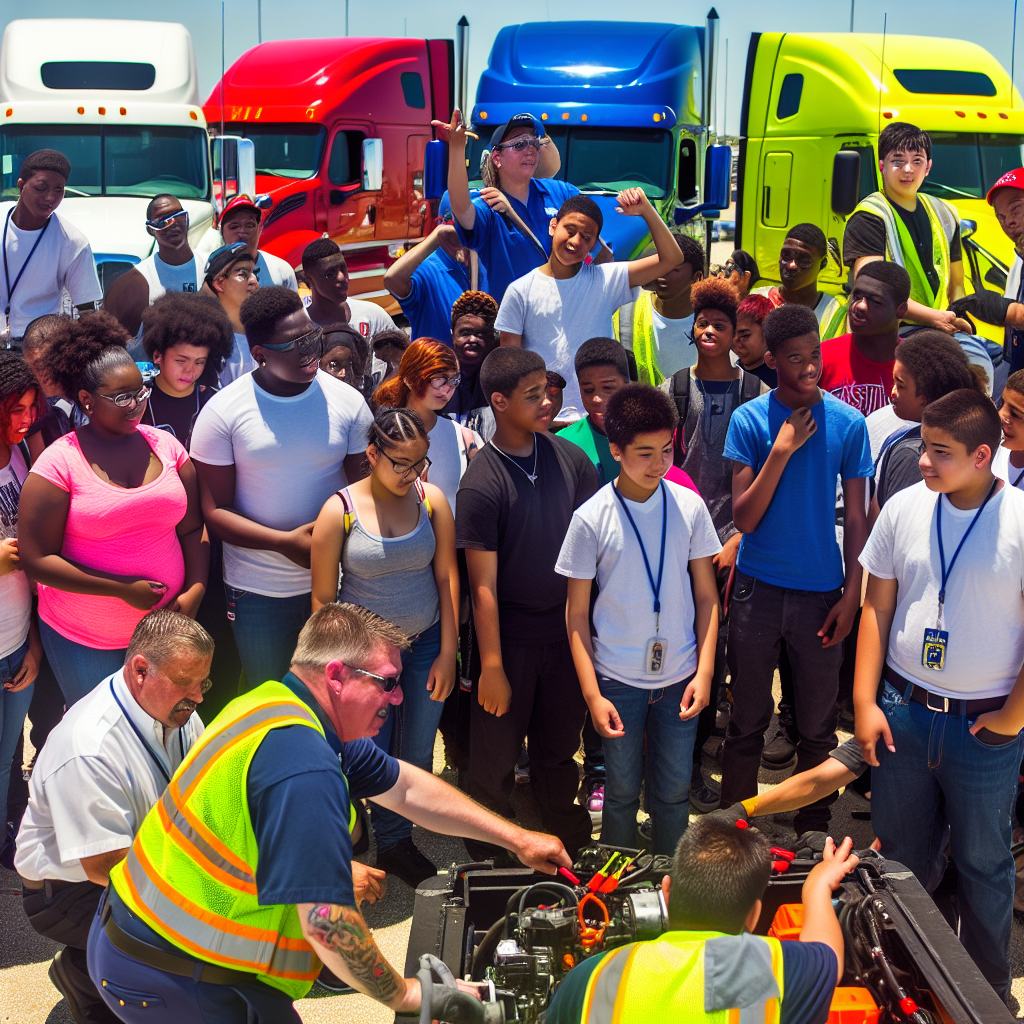
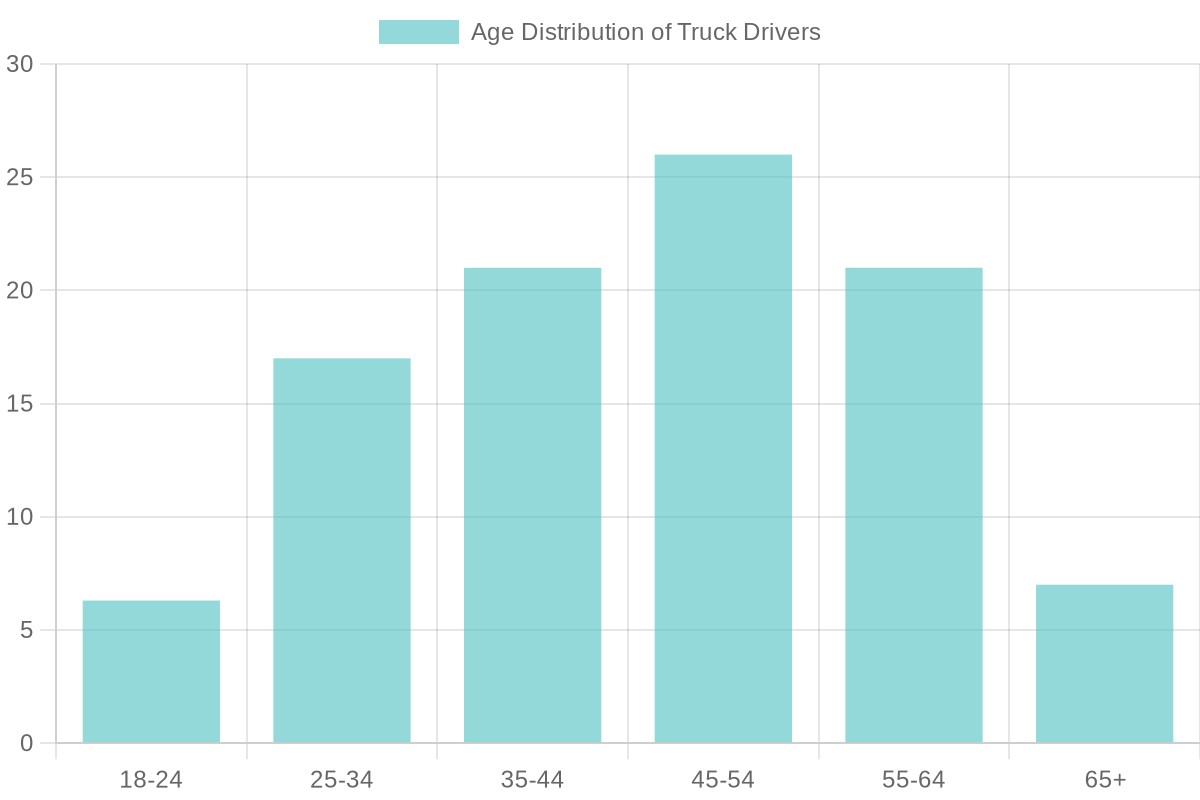
This graph displays the age distribution of truck drivers, highlighting the need for younger entrants in the trucking profession.

Young students actively learning from a truck operator in a hands-on environment, gaining insights into the trucking industry.

Students exploring different types of trucks, showing interest in potential careers in the trucking industry.
Enhance Visual Appeal with Graphs and Images

This graph displays the age distribution of truck drivers, highlighting the need for younger entrants in the trucking profession.

Young students actively learning from a truck operator in a hands-on environment, gaining insights into the trucking industry.
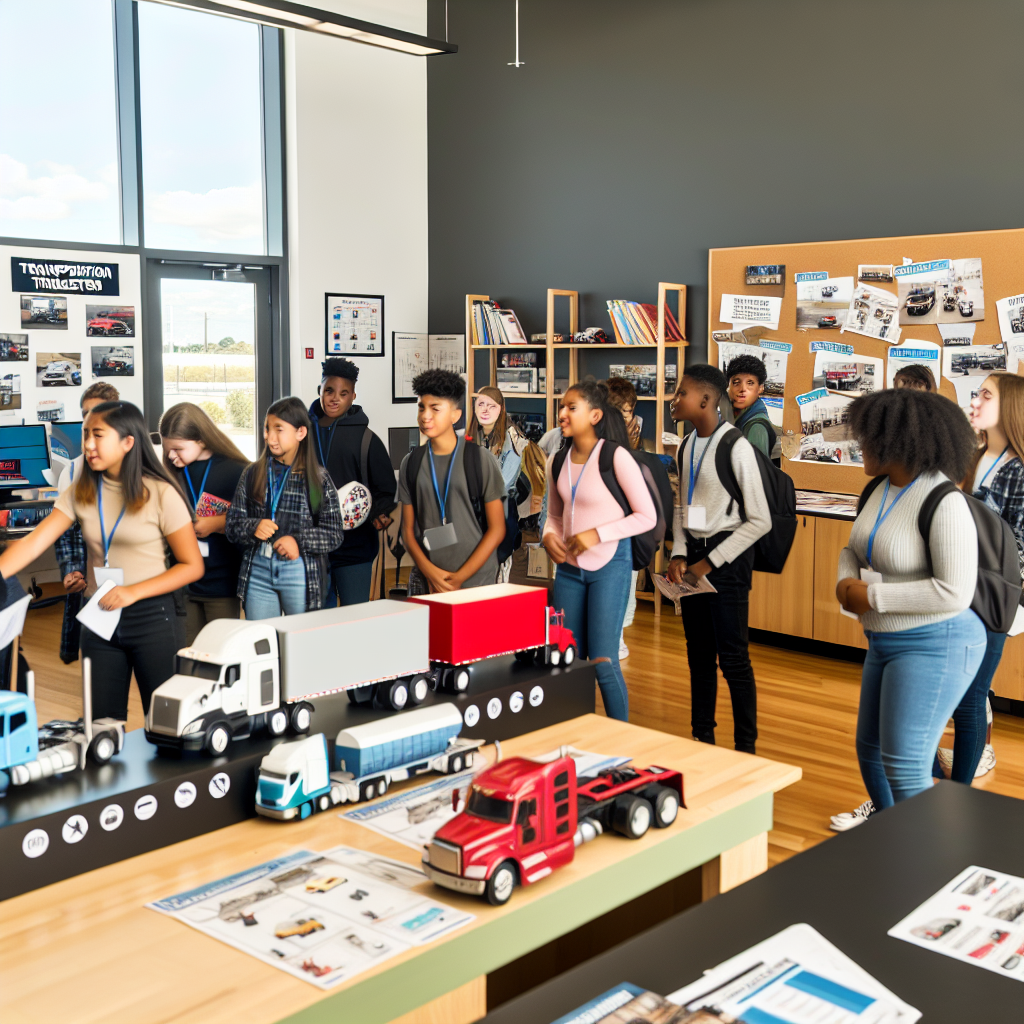
Students exploring different types of trucks, showing interest in potential careers in the trucking industry.
